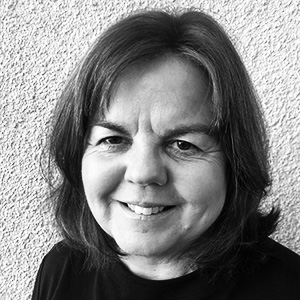Citation

Susan Beck is an internationally recognized leader who has made seminal contributions to the study of mountain belts, subduction systems, and the evolution of the crust and mantle lithosphere. Her research embodies a unique combination of seismology and structural geology that has advanced fundamental interpretations of lithospheric and orogenic evolution. Her work has revealed the nature of orogen collisional processes, plateau formation and deterioration, megathrust fault zones, and great earthquake ruptures. Over her career, Susan has done more than any other seismologist to transform our understanding of orogenic processes in the Andes.
Starting in the Bolivian Altiplano and expanding into Peru, Ecuador, Chile, and Argentina, she carried out a series of impressive seismic field campaigns that generated rich data sets she has exploited to shed light on the structure and dynamics of orogenic systems. Among the most important results of Susan’s Andean work is the documentation of the great thickness and felsic composition of crust beneath the Altiplano and of lithospheric delamination and associated crustal shortening along its boundary. Susan’s investigations in the flat-slab regions of Chile and Peru have transformed our understanding of the causes and consequences of flat-slab subduction. This work has major implications for understanding the location and depth of slab dehydration and the petrological characteristics of the lithosphere and upper mantle beneath flat-slab regions globally.
In addition to the wealth of Susan’s scientific discoveries and accomplishments is her deep dedication and commitment to her students, postdocs, and the seismological community at large. She served as chair of the board of directors of the Incorporated Research Institutions for Seismology (IRIS), and during her term she initiated a focus on early-career seismologists and a new activity to improve seismology capacity building in developing countries and worldwide. Susan possesses the rare, combined characteristics of being a great scientist, a fantastic mentor, and an outstanding scientific leader. She is overly generous with her time and much too humble about her achievements. She has a large crop of successful Ph.D. students and postdocs who think the world of her. She has an uncanny ability to get her graduate students to think critically about their research and to foster a supportive environment in which everyone knows their contributions are important and valued. Above and beyond that, she’s a role model and offers consistent support for women in the Earth sciences. She has inspired me for almost 40 years, and I could not be happier that AGU has honored her with the Walter H. Bucher medal.
—Susan Schwartz, University of California, Santa Cruz
Response
It is a great honor to receive the AGU Bucher Medal, and I want to sincerely thank Susan Schwartz for her generous citation and everyone involved in my nomination. Science is truly a collaborative endeavor, so I have a lot of people to share this award with, especially my husband and partner, George Zandt, and our former and current graduate students. I suspect that I have learned more from my graduate students than they learned from me. I have always been fascinated with mountains, and seismology allowed me to explore the processes associated with orogenic systems. When George and I started this work, there were very few seismic data available in the Andes, so much of our energy went to deploying seismic stations and collecting data. It paid off because it allowed us to work on exciting problems that took us to incredible places. I want to especially share this AGU medal with our international collaborators and friends in South America and Turkey who have shaped my thinking and opened my mind to new ideas.
I got my start in geoscience at the University of Utah and the University of Michigan with inspiring mentors and fellow graduate students who allowed me to pursue my interest in both tectonics and geophysics. I have been fortunate to be a part of a vibrant Geoscience Department at the University of Arizona with incredible colleagues who integrate tectonics and geophysics. I want to acknowledge Peter Coney, Clem Chase, George Davis, Peter DeCelles, and Barbara Carrapa, who kept me grounded in tectonics and provided me with stimulating discussions about the lithosphere and beyond.
I am also fortunate to be a part of an exciting, supportive, and inclusive seismology community. I started my career as IRIS was getting organized with ideas like community engagement, open data, and making instrumentation available to everyone. The IRIS consortium transformed seismology, and I was fortunate to be a part of it. My seismology colleagues and friends are too numerous to name, but you have all inspired me and shaped my career more than you know.
Finally, I want to thank my extended family and especially my mother, Shirley Beck.
After all our challenges in 2020, I look forward to a future that is more inclusive, with more women in geophysics recognized for their contributions, and a time when we can all meet in person.
—Susan L. Beck, University of Arizona, Tucson
Citation:
(2021), Susan L. Beck receives 2020 Walter H. Bucher Medal, Eos, 102, https://doi.org/10.1029/2021EO158481. Published on 17 May 2021.
Text © 2021. AGU. CC BY-NC-ND 3.0
Except where otherwise noted, images are subject to copyright. Any reuse without express permission from the copyright owner is prohibited.
